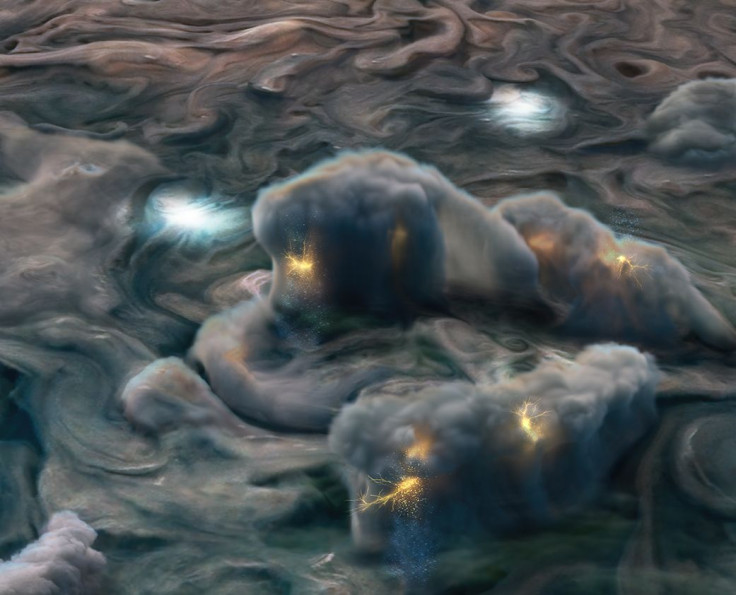NASA’s Juno Mission Discovers How Jupiter’s Violent Storms Form 'Mushball' Hail
KEY POINTS
- NASA's Juno mission discovered shallow lightning on Jupiter
- Jupiter's thunderstorms create ammonia-water solution in the atmosphere
- Hailstones filled with ammonia and water fall from Jupiter’s sky
NASA’s robotic space probe discovered how thunderstorms on Jupiter create hailstones that fall from the sky. Studies conducted on the probe’s findings provide new information regarding the atmospheric conditions of the gas giant.
The new discovery was made by the Juno spacecraft, a space probe launched by NASA in 2011 to observe Jupiter from its orbit. The studies carried out using Juno’s data were published in the journals Nature and the Journal of Geophysical Research (JGR): Planets.
According to the authors of the study, the thunderstorms on Jupiter produce shallow lightning, which is a form of electrical discharge in the atmosphere that’s produced by clouds containing ammonia and water.
“Juno's close flybys of the cloud tops allowed us to see something surprising – smaller, shallower flashes – originating at much higher altitudes in Jupiter's atmosphere than previously assumed possible,” Heidi Becker, the lead author of one of the studies and the head of Juno’s Radiation Monitoring Investigation at NASA, said in a statement.
Through Juno’s observations, the researchers learned that the shallow lightning triggers the formation of ammonia-filled hailstones in Jupiter’s atmosphere. These hailstones, which the researchers referred to as mushballs, rain down from the sky.
The researchers explained that these mushballs form as Jupiter’s thunderstorms send water-ice crystals into the atmosphere, where they come into contact with ammonia vapor. The interaction causes the ice to melt, which then creates a slushy solution composed of water and ammonia.
As the ammonia-water solution gets thicker, it becomes heavier and falls from the sky. The researchers noted that its formation is similar to how hail is created in Earth’s atmosphere.
“Eventually, the mushballs get so big, even the updrafts can't hold them, and they fall deeper into the atmosphere, encountering even warmer temperatures, where they eventually evaporate completely,” Tristan Guillot, the co-author of the study published in JGR Planets, explained.
“Their action drags ammonia and water down to deep levels in the planet's atmosphere. That explains why we don't see much of it in these places with Juno's Microwave Radiometer,” he added.
For the authors of the two studies, Juno’s findings uncovered another fascinating aspect of Jupiter’s unique atmospheric conditions.

© Copyright IBTimes 2024. All rights reserved.





















